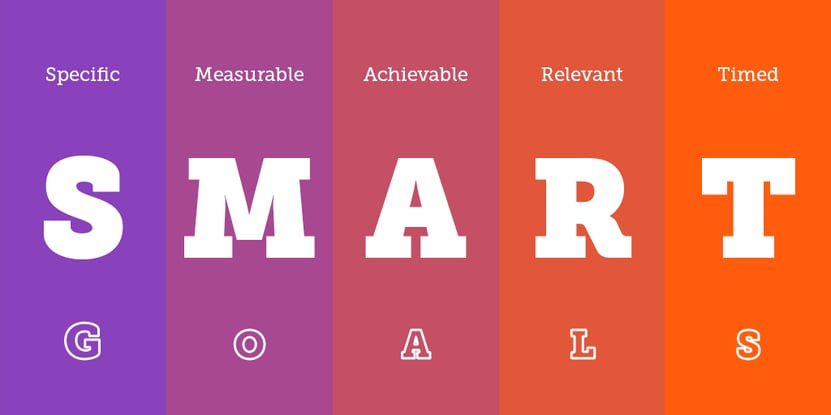Imagine you’re an archer, and your business is the arrow. You unsheathe the arrow, draw the bow-string back, and slowly release. The arrow shoots off at pace, full steam ahead towards... nothing. If you don’t have a target, how will you know you shot well?
If you don’t goal set, you have nothing to measure your progress against. Maybe you’re tracking how much profit you made this year versus last or the number of jobs you completed. Maybe you improved on both figures year-on-year.
.jpg?width=5472&name=vince-fleming-PhwLrQ40XG0-unsplash%20(1).jpg)
But do you know if it was possible for you to do better? You need to set goals for how much profit and how many jobs you want in order to achieve steady growth long-term.
What is the goal?
It might seem like a stupid question - but targets and goals are often confused with your business vision. A target is not ‘I want to dominate the industry’, or ‘I want to be the No. 1 plumbing business in the South West’. That’s your vision.
On the other hand, wanting to generate 500 new leads per month is a goal. Goals are the smaller steps you take to reach your overall vision.
Why should I goal-set?
There is clear evidence to suggest that businesses that do set goals, do better. According to research by MGI, nearly 90% of businesses with a growth rate of less than 5% have no documented vision or plan.
Conversely, over 50% of all businesses that do have a vision and a plan to get there, have a growth rate of over 5%. Put simply, having a vision and a plan to achieve it results in more success. You need to allocate time to set out both your vision and the steps needed to get you there.
How to set SMART goals
Firstly, you need to answer two key questions:
- Where do I want to go? - what’s my ultimate vision?
- How will I get there? - these are your goals; the stepping stones to your vision.
When setting these goals, they need to be SMART goals. A goal of ‘I want to get more leads’ is not SMART - it doesn’t have a numerical value or a time frame. Instead, consider ‘I want to get 150 leads in April’ or ‘I want to increase profit by 10% in April, compared to May.’ Now you know exactly what you want to achieve and what you need to do to get there.
The abbreviation SMART helps you set better goals by giving you the criteria for those goals:
S - Specific
- Clearly define your goal so you know exactly what you are aiming for.
M - Measurable
- Progress and completion can be tracked; set numeric targets.
A - Achievable
- Set goals within your capabilities; make them possible and attainable.
R - Realistic (or Relevant)
- It’s achievable within your resources, budget, knowledge and time.
T - Time-bound
- State when you’ll get it done; set a specific date or time frame.

What might your SMART goals look like?
Imagine your vision is ‘be the biggest employer of plumbing professionals in NSW’.
Let’s break that down:
- How do you define ‘biggest’? Let’s say, you want to have the most plumbers on your books. How big is the current biggest employer? You do your research and find ABC Plumbers has 300 plumbers on the books. You have 100 plumbers. So, you need to employ 201 more plumbers to be the biggest.
Now you need to set your SMART goals to get there. They could look like this:
- Goal: “Within 12 months, I want to have 50 more plumbers in the books.”
- That means you need to average 4-5 plumbers per month and around 1 per week.
- You will also need to source the plumbers through marketing.
- Goal: “Each week, we’ll run an ad on XYZ Website, DEF newspaper and/or KLM jobs board.”
- You will need $X budget, Y person can manage the adverts, and Z person can manage the interviews.
- By the end of each month, you need to have signed 4-5 new plumbers across NSW to reach your goal of 50 new plumbers a year.
Manifest your vision and research what is necessary to achieve it. Then, look at the individual goals and actions needed to make it happen.
Create the necessary steps to reach your vision the same way an archer prepares before firing the arrow at their target. You won’t always hit the spot, but unsheathe another arrow, take aim and fire again.
In the words of Bruce Lee “A goal is not always meant to be reached, it often serves simply as something to aim at.” If you shoot for 5 plumbers per month, and fall short and only recruit 3 - you’re still 3 plumbers closer to achieving your vision.
How FlatRateNOW can help
Having access to data about what does and doesn’t work in your business provides you with the ammunition you need to take increasingly more accurate shots at your target. Last month, you placed an ad in The Gazette and got 20 enquiries. The month before, your ad in The Daily generated 35 enquiries.
Last quarter, your pricing was ad hoc depending on what book each plumber used. This quarter, you standardised pricing using FlatRateNOW, your TrustPilot reviews improved, leading to 10% more enquiries. Data is the lifeblood of your business, providing you with the tools to aim with greater accuracy each and every time.
So, next time you pull out an arrow, ensure your target is clear, and your arrow knows exactly where it’s heading. You may not score a bullseye with every shot, but you’ll hit it more often than if you shot blindfolded.

